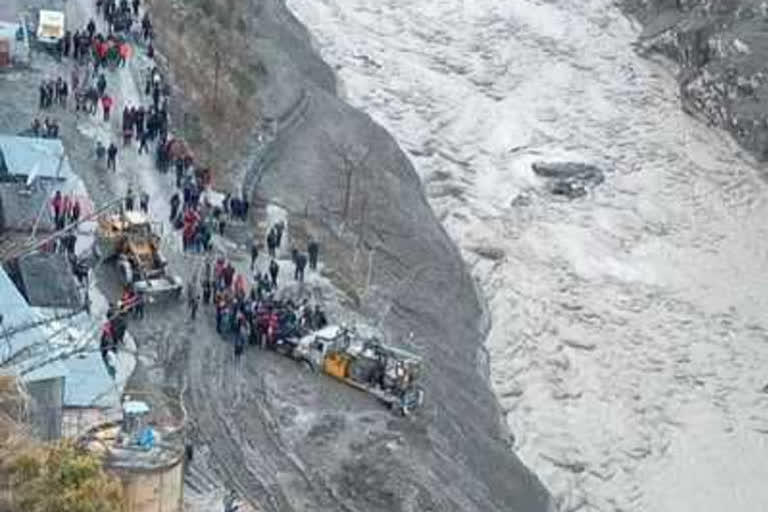Hyderabad: The Uttarakhand tragedy is a result of the failure to draw lessons from the earlier devastations left behind by the fury of the otherwise benign and beautiful mother nature.
Uttarakhand witnessed flash floods when a glaciated slope in Chamoli district slid into the Dhauli Ganga river on February 7. The 13.32 MW Rishi Ganga hydropower project was completely washed away in the resultant floods. Heavy damage was also caused to the 480-megawatt NTPC power station.
The sudden flood swept away seven bridges, cutting the connectivity to 17 villages. At least 20 persons died and around 200 went missing as a result of this calamity.
After the Himalayan Tsunami of the year 2013, in which 6,000 devotees died and the lives of several thousand were affected, this is yet another major calamity in Uttarakhand. At that time seven years ago, the tragedy was caused when a glacial lake had burst. However, experts opine that the causes behind the present tragedy need to be studied deeply.
Himalayan glacial slides are common in the monsoon season. The present burst of a glacier at the height of winter remains unprecedented.
In the year 2019, a study based on the analysis of satellite data of the past four decades had confirmed the fact that glaciers are receding at an accelerated pace as a result of rising global warming. Earlier, the temperature of glacial ice used to range from minus 6 to minus 20 degrees Celsius. As a result of the rising global warming, the temperature has risen to minus 2 degrees celsius. Intensified human activities in the Himalayan region are further exposing the region to unimaginable calamities.
There is nothing to find fault with Uttarakhand's ambition to be a surplus power state. However, the wanton destruction of the environment in the process of exploiting the opportunities to generate hydropower is proving calamitous.
Read: Meet the man who first shared video of Uttarakhand disaster
About a decade ago, a Comptroller and Auditor General (CAG) report had stated that the construction of 60 hydropower projects across the Alaknanda river will destroy the river valley eco-system of the region.
The failure to heed to such warnings had led to the tragedy in the year 2013. Following the tragedy, the apex court had appointed a high power committee, which clearly stated the dangers involved in the construction of hydropower projects at a height of 2000 meters above mean sea level. The panel had suggested cancellation of 23 projects that were being built at those dangerous heights.
The serious consequences of the actions like digging tunnels at the precarious heights and throwing the residue into rivers, indiscriminate felling of trees, diversion of rivers and other destructive actions are already being felt.
Uttarakhand presents a pathetic picture on the forest front as forest land to the tune of 50,000 hectares has been taken away for development-related activities. Another 10,600 hectares are under illegal occupation and 44,5000 hectares of forest fell prey to wildfires.
Earlier, the Supreme Court had inquired whether the shifting of power projects from sensitive areas would have a salutary effect. In February last, the court had also stated that projects should not imperil lives. The local inhabitants had made shrill complaints that explosives were being used to dig hills for the construction of Rishi Ganga project. But those complaints fell on deaf ears.
Ironically, the Rishi Ganga project itself has been washed away in the present floods. This is a lesson taught by Mother Nature, not only to Uttarakhand, but to the entire country.
Read: Sniffer dogs, world class gadget pressed for rescue operation in Uttarakhand




